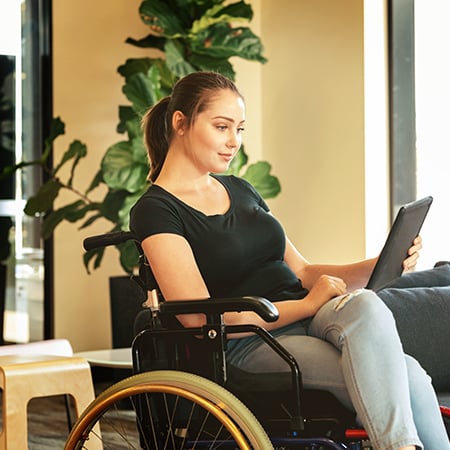Autonomic dysreflexia is a life-threatening condition, but there are some simple precautions you can take to help avoid it and minimize the risks.
Autonomic dysreflexia can occur for some people with a spinal cord injury with dire consequences—stroke, seizure, or cardiac arrest. It can happen when autonomic dysreflexia triggers cause your body to overreact to many different types of stimuli below your spinal cord injury. Your autonomic nervous system can send your blood pressure spiking to dangerous levels.
Autonomic dysreflexia prevention tips
- Check your catheter regularly: Inspect your catheter consistently to ensure the pouch is not overfilled or hoses are not kinked. Also, check that your catheter is properly connected and functioning properly
- Avoid bladder infections: It’s vital to try and avoid urinary tract infections (UTIs), which are common for catheter users. Keep your catheter clean, drink plenty of water, and follow physician advice—such as diet changes—that may help you avoid UTIs
- Maintain your bladder program: Stick to your regular schedule of bladder emptying and catheter maintenance. If you use an intermittent catheter, make sure you are emptying your bladder fully each time
- Stick to your bowel program: Keep your bowels from becoming too full with regular bathroom trips. If constipation is an ongoing issue, it can cause autonomic dysreflexia. Digital stimulation done too roughly can also be a cause. Consult with your medical team on how to address these issues
- Check your skin health consistently: Pressure sores (or pressure ulcers) can cause autonomic dysreflexia, as well as burn and other skin health issues. You and your caregiver should check all areas below your spinal cord injury level for any red spots or skin-related issues and seek medical help if needed
- Inspect for trauma regularly: Trauma that you may not be aware of can trigger autonomic dysreflexia. You and your caregiver should periodically check for cuts, scrapes, scratches, broken bones, or fractures… essentially, any trauma below the level of spinal cord injury
- Wear loose-fitting clothing and shoes: Tights and constricting clothing or shoes can cause autonomic dysreflexia, so stick to looser items. Also, check for tight belts or braces that may be hindering blood flow. Lastly, check that undergarments are not constricting your genitalia in any way
Other steps you can take for autonomic dysreflexia prevention
Your caregiver must be as informed as you are about autonomic dysreflexia, especially the warning signs that you may be experiencing this serious medical condition. It would be best if you also discussed this condition with family members and anybody else within your inner circle that cares for you.
If you do experience autonomic dysreflexia, keep a diary of symptoms, causes, and what you, your caregiver, or a physician did to resolve it. If you have recurring episodes, this diary may be helpful to your medical team.
Finally, keep a wallet card with vital information about autonomic dysreflexia on you at all times. You can download and print an AD wallet card online, courtesy of the Christopher and Dana Reeve Foundation.
References:









